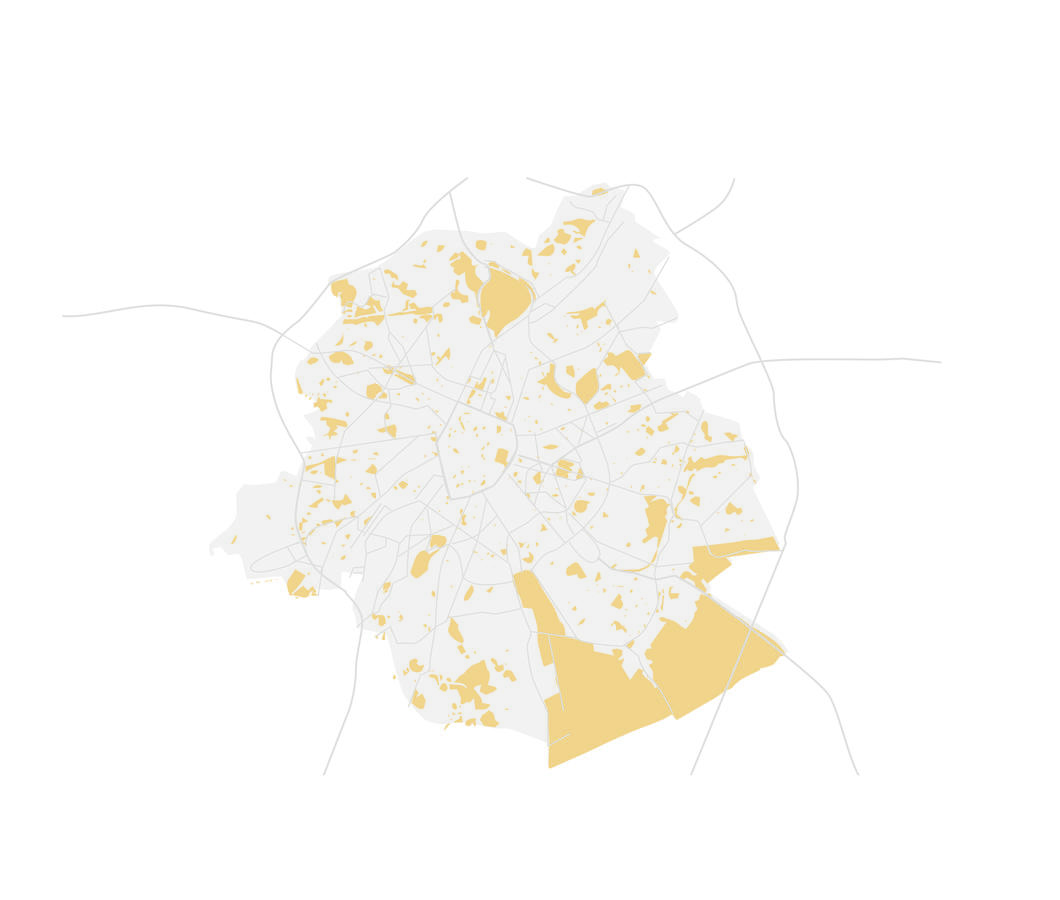Today, many cities face the issue of urban decay. For urban planners, it is a potential densification space, for naturalists an essential biodiversity resource for the urban ecosystem. CIVA, ARAU, Apis Bruoc Sella, Bruxelles Nature, and Natagora propose a two-part symposium: a morning of talks on the history of Brussels' disused land, its potential, and the social and ecosystem benefits they provide; followed by an afternoon devoted to two guided tours around the emblematic abandoned lots of Brussels: the Josaphat lot and the Donderberg lot.
Fully booked. Covid Safe Ticket event.
The definition of an abandoned lot or wasteland is complex. Historically, a wasteland refers to land that has been put to rest, abandoned, a kind of forgotten place. At the end of the industrial era and with the advent of deindustrialization, many wastelands or abandoned lots sprang up in the urban fabric. We also speak of "friche culturelle" to designate industrial spaces occupied temporarily by artists... These lots can also be considered temporary spaces of freedom, proposing new possibilities to those who know and frequent them. The abandoned lots refer, in any case, to a space that turns into a wasteland or disused area as soon as humans stop exploiting it.
Depending on a person’s role in the urban environment (architect, landscaper, naturalist, historian, urban planner, citizen, ...), its definition and uses vary. This colloquium aims to be a moment of encounter between actors in the city (developers, activists, and decision-makers) to put the future of Brussels' wastelands into perspective.
Today, many abandoned lots are open spaces where nature can thrive in the heart of the city. In the eyes of the urban planner, these lots represent a void to be filled or densified rather than considered an essential space as it is. For policymakers, the lots constitute a potential to be exploited in terms of housing, new education or sporting facilities, or commercial activities. In light of current ecological issues, the question arises as to the place and status of empty spaces in the city and the preservation of their biodiversity; or more broadly, the future of urban land resources.
PROGRAM
You may choose to participate in the entire conference (morning and afternoon), or only a part of it (morning or afternoon).
The morning exchange at CIVA: 9am - 13.00pm
Intervention 1 - The development of wastelands: a political ecology view.
How can environmental and social struggles about wastelands be brought together? Between land value and ecological value, how can we explore the political potential contained in the notion of "nature"? How can the point of view of nature reconcile those struggles?
Speakers:
Chloé Deligne, researcher and teacher at ULB, coordinator of the Interdisciplinary Laboratory for Urban Studies.
Benedikte Zitouni, sociologist at the University Saint-Louis-Brussels, director of CESIR since 2018.
Intervention 2 - Alternative uses: the wasteland to the rescue of urbanization?
Beyond densification, what are the challenges that these “wastelands” can help overcome? How can these particular spaces be put to use?
Speaker: Simon Blanckaert, landscape architect, researcher, teacher and director of the Territory department at the Faculty of Architecture and Urban Planning in Mons since 2013.
Intervention 3 - Wastelands as a lever for a higher quality of living
What eco-systemic services do wastelands offer to the quality of life of city dwellers, whether in terms of social cohesion, or physical and mental health?
Speaker: Yves Hubert, architect and landscape designer, founder and director of Atelier Caneva-s.
Intervention 4 - Empty, or full of life?
If the living occupy it, then the void is not empty. Should we therefore consider it as "densifiable"? Are urban wastelands only voids to be built upon? Should we seek to densify, more and more? Or should we leave these spaces “empty”?
Speaker: Cécile Mattoug, architect and geographer, lecturer in urban planning at the Institute of European Studies of the University of Paris 8 Vincennes - Saint-Denis.
Lunch (optional)
13h00-14h00 : to be picked up at CIVA
An afternoon of discovery: 2pm - 5pm (FULLY BOOKED)
Departure at 2pm from the Luxemburg train station (RUE DU TRÈVE/TRIERSTRAAT,1050 BRUXELLES/BRUSSEL)
Two walking tours are planned in the afternoon around two sites: the Donderberg and the Josaphat lots. Led by a pair of guides, these visits extend the debate to the field and offer two perspectives: one historical and urbanistic, the other naturalist and militant. The urban development history around each of these sites will be shared along with a retrospective of the projects that have been proposed for the lots up to now.
Organization of the visits:
At the beginning of the conference, two groups will meet at the Luxemburg train station at 2:00 pm to go to the Evere or Bockstael stations (line S): one will go to the Josaphat site [FULLY BOOKED], the other to Donderberg.
The journey will reveal the relationship between biodiversity and the railway network, in particular its embankments which are part of the Brussels ecological network. Here, the interventions of Amandine Tiberghien (Natagora) and Mario Ninanne (Bruxelles Nature) will begin the discourse.
· (FULLY BOOKED) Josaphat lot: departure from Luxemburg train station – Evere | Guides: Isabelle Vanebosse (ARAU) and Eric De Plaen (Administrator at Natagora).
· (FULLY BOOKED) Donderberg lot: departure from Luxemburg train station - Bockstael | Guides: Isabelle Vanderhoeven (ARAU) and Charlotte Simon (Natagora).
